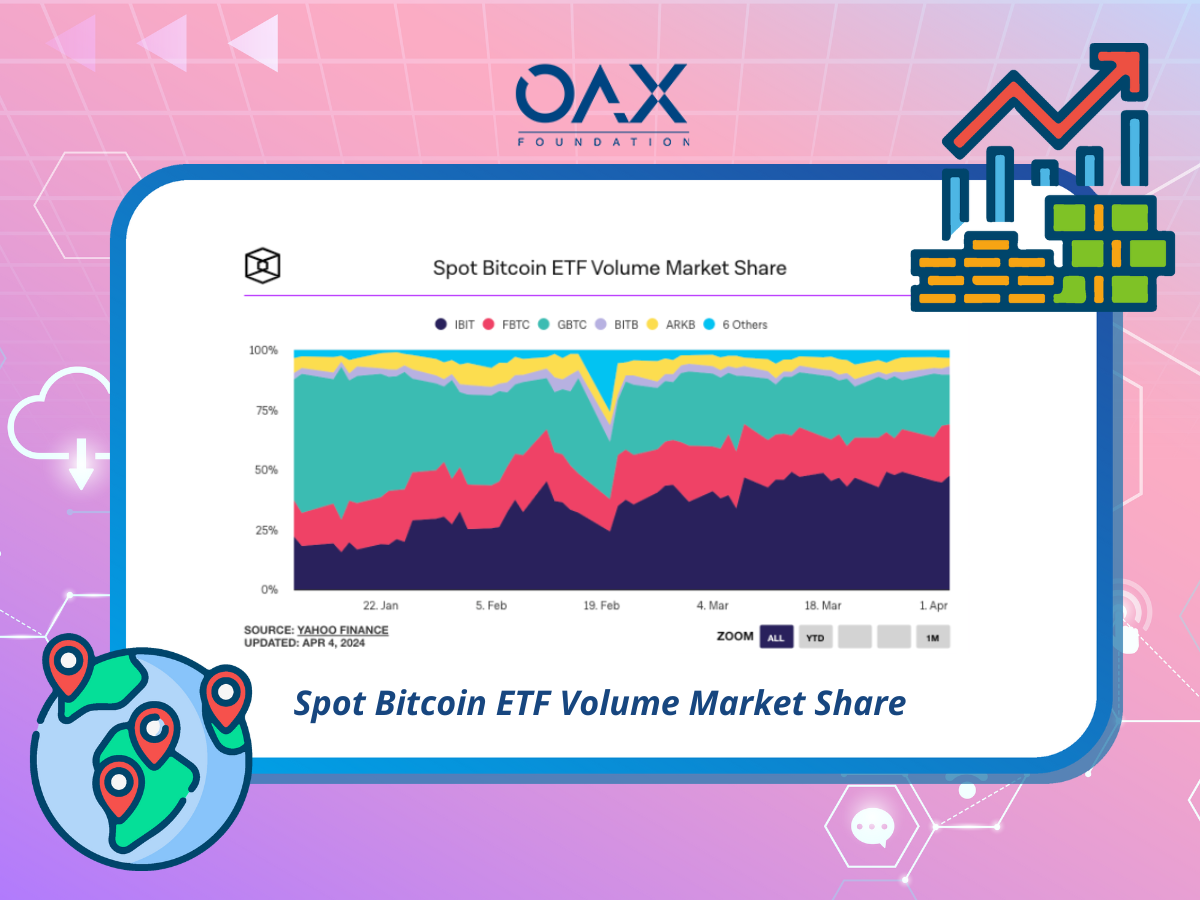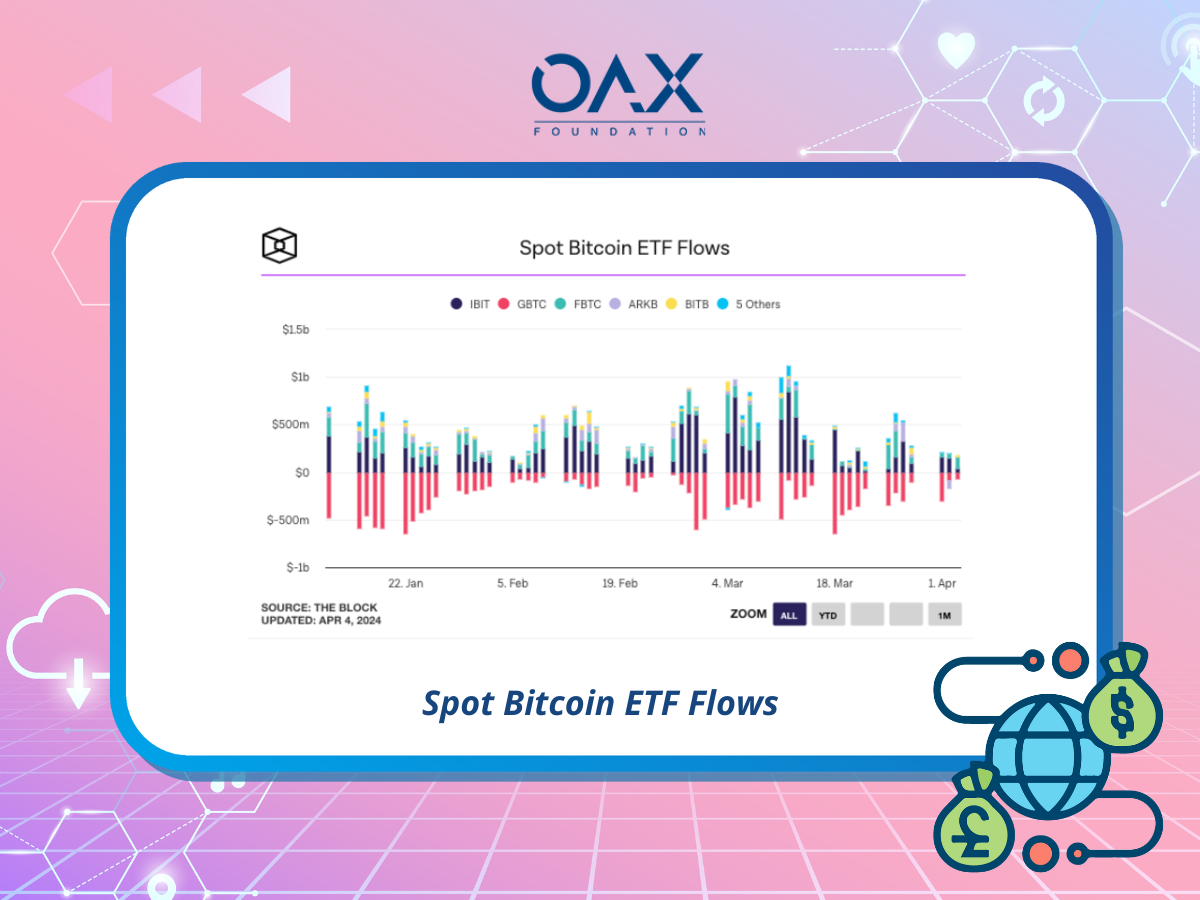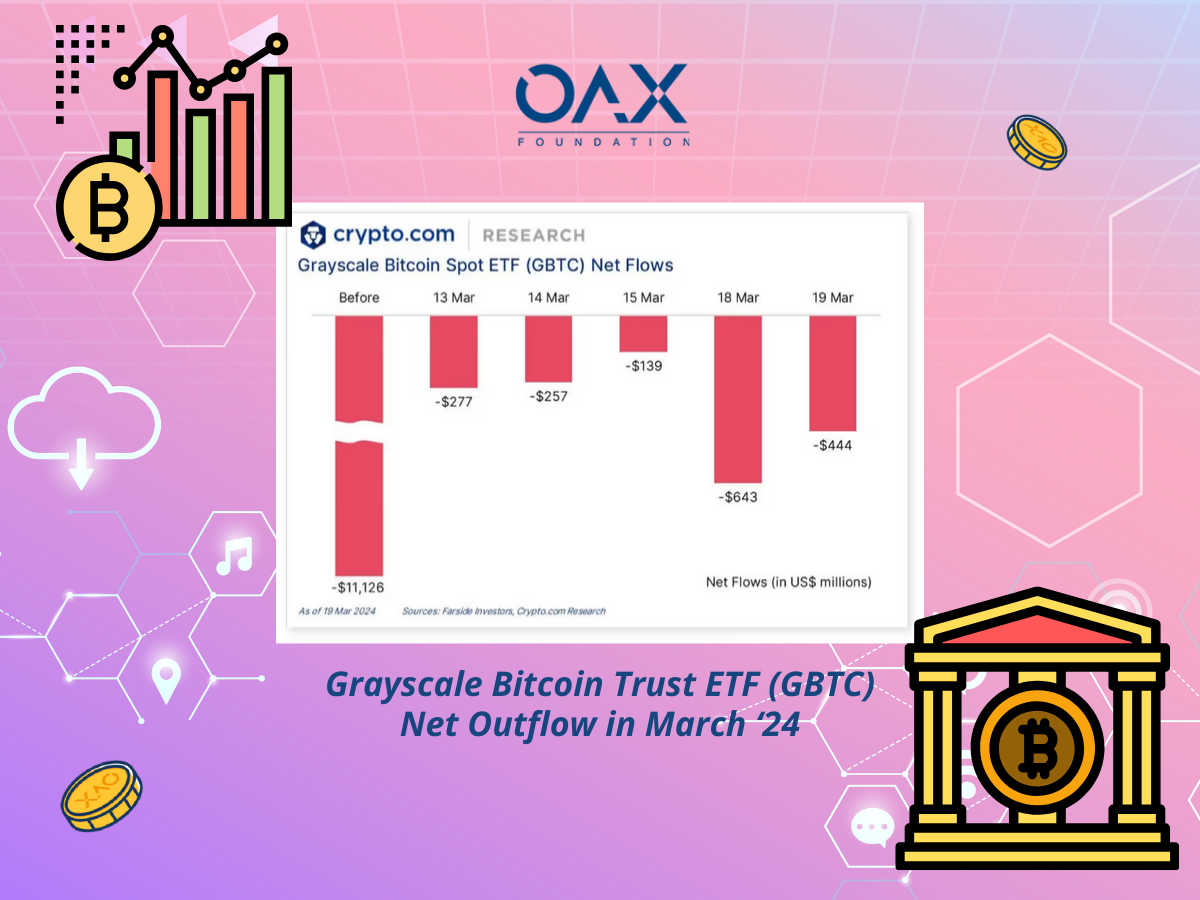
ETF Part III - The Impact of spot BTC ETF on the Crypto Market: A Game-Changer in Motion
Since the launch of the spot BTC ETF nearly three months ago, the dynamics of the cryptocurrency market have undergone a significant transformation. In this three-part series, we have explored the fundamentals of spot Bitcoin ETFs in part one and delved into the underlying currents from stakeholders in part two. Now, in part three, we will examine the profound impact that the ETF has had on the crypto market thus far. From notable outflows from grayscale to important considerations for investors, we will also discuss the emerging trends that are shaping the future of this evolving landscape.

Update on Market Share
In recent developments, digital asset investment products witnessed a notable rebound in inflows, totaling $862 million for the past week. This positive trend comes on the heels of a previous week marked by outflows, indicating a renewed investor interest in the market. However, despite the overall resurgence, the daily trading volume of spot Bitcoin ETF has experienced a decline of 36% since its peak in March. Currently, the daily trading volume stands at $5.4 billion, reflecting a consolidation phase after the initial surge of interest following the launch of the ETF.
When it comes to market share, Grayscale continues to hold the leadership position, albeit facing a significant outflow of funds. BlackRock, on the other hand, is emerging as a strong contender, rapidly closing the gap with Grayscale. BlackRock’s iShares Bitcoin Trust (IBIT) has gained substantial momentum, boasting an impressive $17.7 billion in assets under management. In contrast, Grayscale’s Bitcoin Trust (GBTC) has witnessed outflows exceeding $15 billion since its conversion at the beginning of the year.
Industry analysts predict that the momentum and growth of IBIT will likely enable it to surpass GBTC in terms of assets under management in the near future. This projection underscores the shifting investor preferences towards regulated ETFs as a preferred investment vehicle for gaining exposure to Bitcoin.

Reasons Behind Grayscale’s Outflow
Grayscale, as the leading provider of spot Bitcoin ETFs, has emerged as a significant contributor to outflows as they have encountered substantial challenges as a result of the emergence of spot Bitcoin ETFs in the US market. This development has led to a significant shift in investor preferences, prompting them to move away from GBTC for two primary reasons.

Firstly, one of the main factors driving investors away from GBTC is the comparatively higher fees associated with the trust. With the introduction of Bitcoin ETFs, investors now have access to alternative investment options that offer lower expense ratios, making them more cost-effective in the long run. As a result, investors seeking exposure to Bitcoin are increasingly opting for these lower-cost ETFs rather than GBTC.
Secondly, the erosion of the premium that GBTC used to command has also played a crucial role in investors’ departure from the trust. Previously, GBTC traded at a premium to the net asset value (NAV) of its underlying Bitcoin holdings. This premium was primarily driven by limited access to Bitcoin investment options and the trust’s structure. However, the launch of spot Bitcoin ETFs has provided investors with a direct and regulated way to invest in Bitcoin, eliminating the need for GBTC’s premium. Consequently, investors have been drawn to ETFs, which offer a more transparent and efficient means of gaining exposure to Bitcoin without the premium associated with GBTC.
To meet redemption requests from departing investors, GBTC has been compelled to sell Bitcoin and transfer the proceeds to those investors. This selling pressure has contributed to the decline in Bitcoin’s price, as the market absorbs the additional supply of Bitcoin being liquidated by GBTC. This dynamic further reinforces the impact that the emergence of spot Bitcoin ETFs has had on the traditional offerings in the market, with GBTC navigating challenges in retaining investor interest and managing its holdings.
Potential Inflow and Retail Adoption Beyond US Borders
Major global banks Morgan Stanley and UBS are on the verge of approving exposure to a Bitcoin ETF. The banks are expected to announce the offering in the near future. If approved, this move could potentially bring new capital into the cryptocurrency market and provide access for retail investors who are interested in investing in Bitcoin. The introduction of a spot Bitcoin ETF by these banks could mark a significant milestone in the mainstream adoption of cryptocurrencies and further solidify Bitcoin’s position as a recognized asset class.

Moreover, the development of Bitcoin ETFs extends beyond the United States, with noteworthy updates emerging from Asia. Hong Kong, where the OAX foundation is headquartered, has displayed a willingness to accept applications for spot Bitcoin ETFs, and it is expected that the approval process will conclude by the end of June. Leading asset managers like VSFG have already submitted applications for spot Bitcoin ETFs in Hong Kong. If these applications receive approval, it would open up opportunities for retail investors in Hong Kong to gain exposure to and invest in cryptocurrencies through ETFs, thereby expanding the accessibility of digital assets in the Asian market. This highlights a growing interest and recognition of cryptocurrencies as viable investment options that transcend traditional financial instruments.
Closing thoughts:
In summary, despite challenges faced by GBTC and recent outflows, other Bitcoin ETFs have seen inflows, mitigating the impact of fund exits from GBTC. The growth of ETFs has significantly influenced liquidity in the cryptocurrency industry. The approval of spot Bitcoin ETFs outside of the US such as in Hong Kong reflects a rising interest in providing Bitcoin-related investment products in the region, highlighting the growth potential of the asset class. Overall, the cryptocurrency market remains dynamic, and investor interest may revive as sales efforts target institutional clients and the introduction of more robust derivatives markets holds the potential to reduce volatility over time.
Disclaimer: The above is an opinion piece written by an authorized author, but in no way represents the official standpoint of OAX Foundation Limited, nor should it be meant to serve as investment advice.


